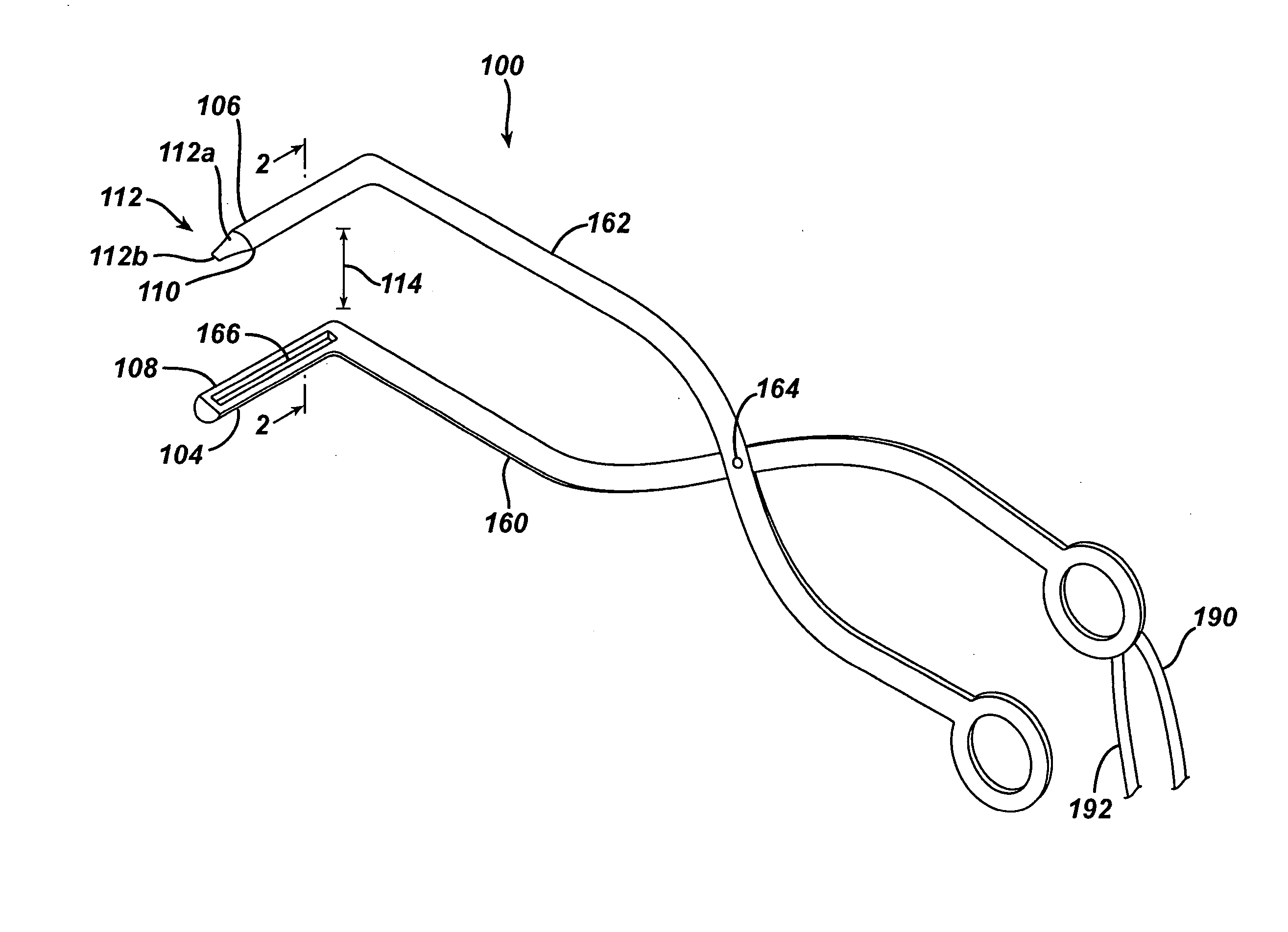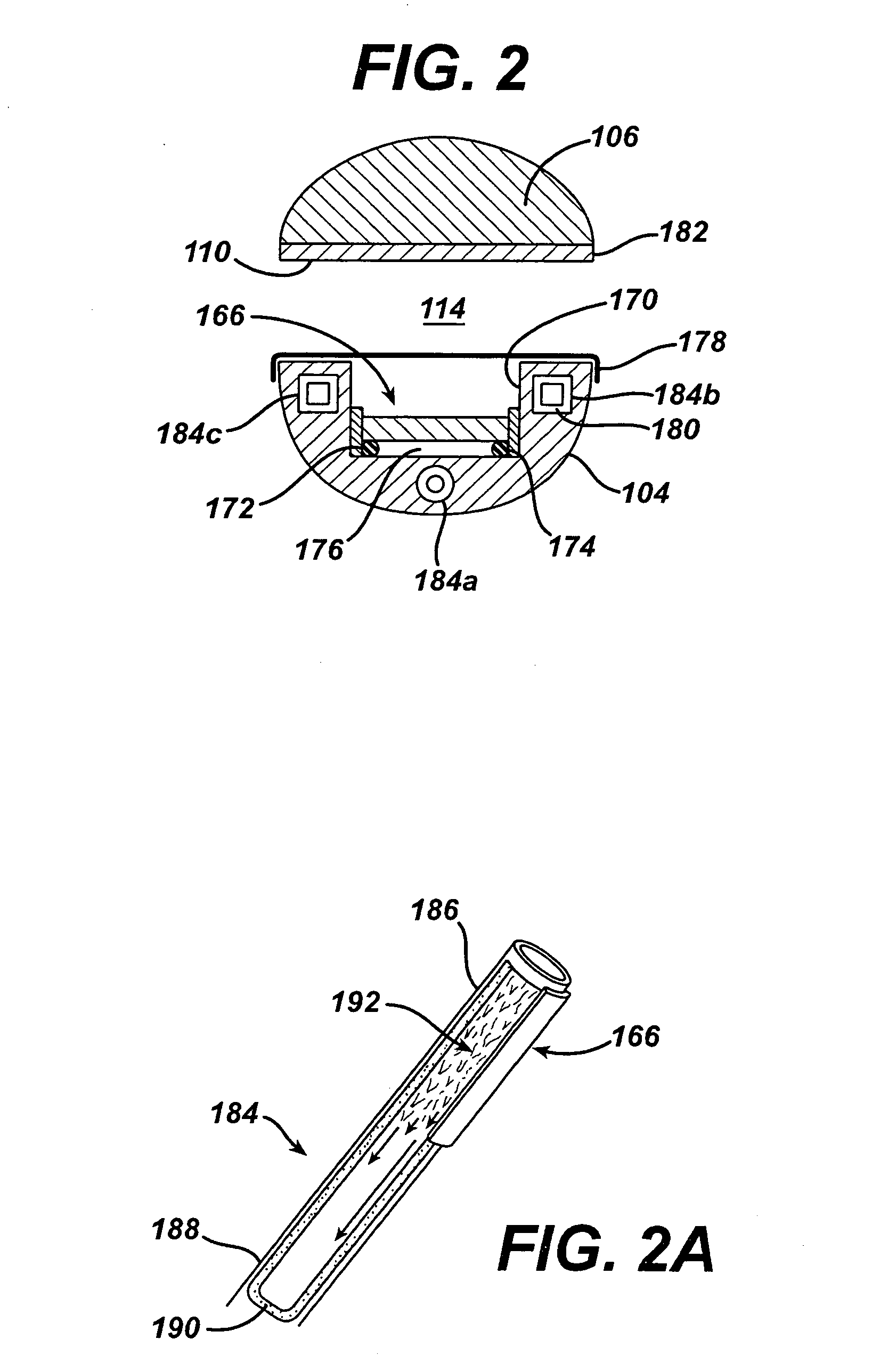High intensity ablation device
a high-intensity ablation and device technology, applied in the field of surgical instruments, can solve the problem that instruments may not be able to guarantee transmural lesion, and achieve the effect of enhancing performan
- Summary
- Abstract
- Description
- Claims
- Application Information
AI Technical Summary
Benefits of technology
Problems solved by technology
Method used
Image
Examples
first embodiment
[0027] Referring now to FIG. 1, in a first embodiment the instrument, generally 100, generally has a distal end 102 having first elongated jaw 104 and second elongated jaw 106. Each of the first and second elongated jaws 104, 106 has a respective first ablation surface 108 and second ablation surface 110. As will be described in more detail, an ablation surface can comprise a surface adjacent or part of a source of ablative energy, or a surface reflecting incident ablative energy. At least one of the first and second elongated jaws 104, 106 may include a pointed distal tip 112 useful for piercing tissue. Preferably, the pointed distal tip 112 comprises a tapered surface 112a terminating in a sharp leading edge 112b. Those skilled in the art will appreciate that the pointed distal tip 112 may be configured in many ways without departing from the scope or spirit of the present invention. For example, the pointed distal tip 112 may be conical and terminate in a point or have two tapere...
second embodiment
[0043] an ablative clamp, generally 200, is shown in FIGS. 3-5. Clamp 200 has a first elongated jaw 204 and a second elongated jaw 206. As seen in each of FIGS. 3-5, the first and second elongated jaws 204, 206 are curved along their length. The first and second elongated jaws 204, 206 are mounted on the distal end of a shaft 261. In this embodiment, the shaft represent a flexible malleable shaft, a preferred embodiment of which is disclosed in U.S. patent application Ser. No. 10 / 736,199 (Attorney Docket 16356), filed 15 Dec. 2003, the complete disclosure of which is hereby incorporated by reference. Shaft 261 may also be a rigid shaft, steerable / flexible shaft, or other suitable configuration as is known in the art. In this embodiment, the first and second elongated jaws are articulated to be parallel to each other, for example by an actuating cable or shaft in, on or near shaft 261.
[0044] Referring now to FIG. 5, the ablative clamp 200 is shown in cross-section. First elongated ja...
PUM
 Login to View More
Login to View More Abstract
Description
Claims
Application Information
 Login to View More
Login to View More - R&D
- Intellectual Property
- Life Sciences
- Materials
- Tech Scout
- Unparalleled Data Quality
- Higher Quality Content
- 60% Fewer Hallucinations
Browse by: Latest US Patents, China's latest patents, Technical Efficacy Thesaurus, Application Domain, Technology Topic, Popular Technical Reports.
© 2025 PatSnap. All rights reserved.Legal|Privacy policy|Modern Slavery Act Transparency Statement|Sitemap|About US| Contact US: help@patsnap.com



